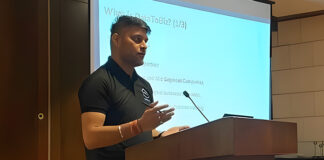All
- All
- Agriculture
- AI
- AR & VR
- Automotive
- B2B
- BFSI
- Blockchain
- Career
- Cybersecurity
- D2C
- Design
- Digital Marketing
- Drone
- Education
- Employee Advocacy
- Energy
- Gadgets
- Health
- Healthcare
- Hot Topics
- Industry
- Innovation
- Interiors Design
- IoT
- Leaders Column
- Lifestyle
- Manufacturing
- Marketing
- Press Release
- QA
- Retail
- Security
- Technology
- Telecom
- Travel & Hospitality
More
How To Solve Storage Problems In Indian Homes With Homestrap
Living in an Indian city means you face lots of problems with limited space. This scenario happens due to small flats and tight corners....
How to Keep Member Data Safe and Follow Privacy Rules in...
Today, many organizations—like clubs, associations, and online platforms—collect personal data from their members. This data often includes names, emails, phone numbers, and even payment...
Leaders Column
Press Release
Dusit Foods joins Thai Airways to expand the success of the ‘Streets to Sky’...
Bangkok, 8 May 2025 – Bangkok, Thailand – Dusit Foods Co., Ltd., a subsidiary of Dusit International, one of Thailand’s leading hotel and property...
Record investments of €17.3 billion in the last twelve months boost Iberdrola’s profit in...
Record investment: €17.3 billion in the last 12 months
- In the quarter, investments grew by 14% to €2.720 billion, 65% in the United...




















